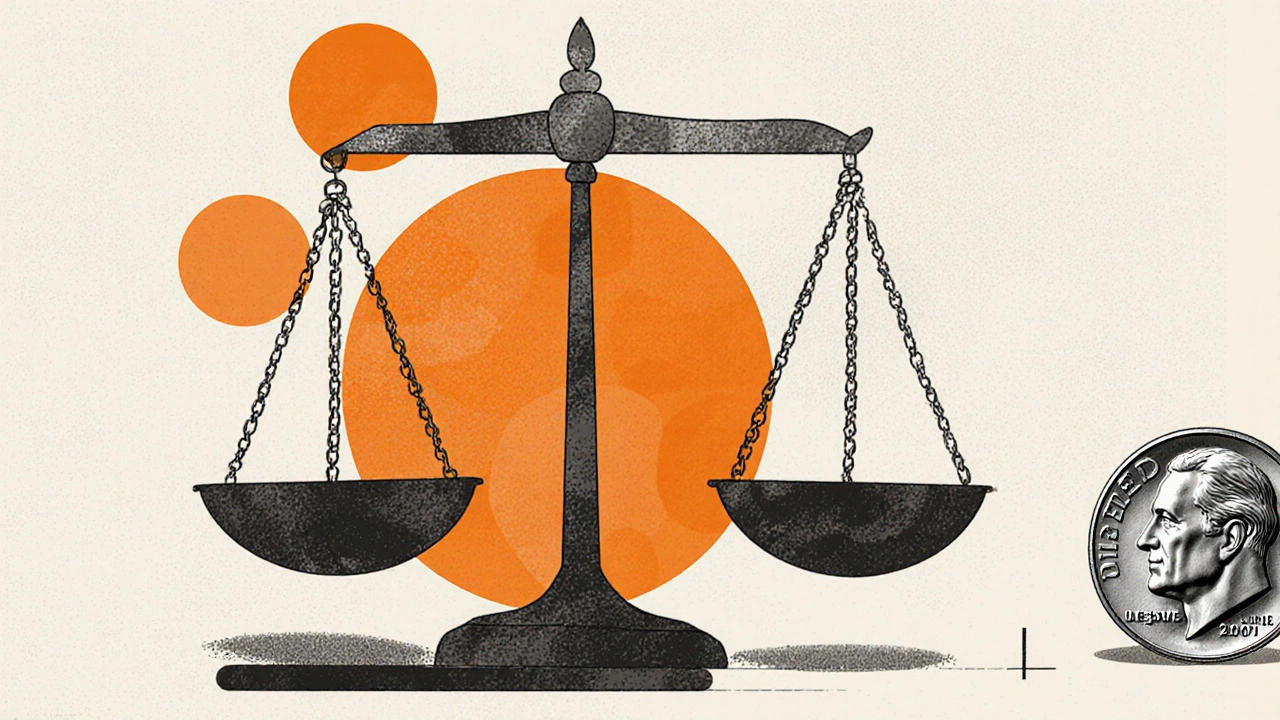Federal Reserve: Why Its Moves Matter to Crypto Fans in Africa
When talking about the Federal Reserve Federal Reserve, the central bank of the United States that controls the country’s money supply, also known as the Fed, you’re really looking at a powerhouse that sets monetary policy, decides interest rates, and tries to keep inflation in check. Monetary policy the set of actions the Fed uses to influence the economy, mainly through open‑market operations and reserve requirements is the tool kit behind those decisions. Interest rates the cost of borrowing money, expressed as a percentage are the most visible lever, and they ripple through everything from mortgage bills to the price of Bitcoin. Finally, inflation the rate at which overall prices rise, eroding purchasing power is the metric the Fed watches night and day. Understanding how these pieces fit together helps you see why a Fed announcement in Washington can move a crypto exchange ticker in Nairobi.
The Fed’s influence works like a chain of cause and effect. First, the Federal Reserve decides whether to tighten or loosen monetary policy. When it tightens, it raises interest rates; when it loosens, it cuts them. Those interest rate shifts affect the yield on U.S. Treasury bonds, which many investors treat as a safe‑haven benchmark. Cryptocurrencies, especially those seen as “store‑of‑value” assets, often react to that benchmark. Lower rates make cheap money flow into riskier assets, pushing Bitcoin and Ethereum higher, while higher rates can pull money back into bonds, dampening crypto demand. This dynamic is especially relevant for African traders who juggle local currency volatility with dollar‑denominated crypto assets.
What This Means for African Crypto Users
In African markets, the Fed’s policy decisions intersect with several local factors. Many African economies peg parts of their currency to the dollar or rely heavily on dollar‑linked remittances. When the Fed hikes rates, the dollar tends to strengthen, making imported goods more expensive and fuelling local inflation. At the same time, a stronger dollar can boost the fiat value of crypto holdings, giving holders a hedge against domestic price spikes. Conversely, a Fed rate cut can weaken the dollar, easing import costs but potentially reducing the dollar‑value of crypto portfolios. This push‑pull creates a constant balancing act for everyday investors who use mobile wallets to trade Bitcoin, BNB, or local stablecoins.
Beyond the direct price impact, the Fed’s stance shapes regulatory conversations worldwide. Central banks across Africa watch the Fed’s moves when designing their own digital currency projects or when setting guidelines for crypto exchanges. For example, a dovish Fed—one that keeps rates low—often encourages more experimentation with decentralized finance, while a hawkish Fed may trigger tighter capital controls to protect financial stability. Knowing which side of the Fed’s policy spectrum the U.S. is on can give African entrepreneurs a heads‑up on upcoming policy shifts in their own countries.
All of this might sound like a lot of macro‑talk, but the takeaway is simple: every Fed press release, every Federal Open Market Committee (FOMC) meeting, and every change in the interest rate target has a tangible effect on the crypto market you trade on daily. Below you’ll find a curated set of articles that break down recent Fed actions, explain how they’re reshaping crypto prices, and show what African investors are doing to stay ahead of the curve. Dive in to see practical analysis, real‑world examples, and actionable tips that connect the dots between U.S. monetary decisions and your crypto strategy.
Fed Divided on December Rate Cut Despite Trump’s Push
The Federal Reserve is deeply divided over a December 2025 rate cut, defying President Donald John Trump and Wall Street expectations after recent inflation data and slowing job growth raised concerns about economic stability.
US Dollar Holds Steady as Traders Await Key US Data
The US Dollar stayed firm on Thursday after a strong rally against its peers on Wednesday. Traders are bracing for a slew of US reports, including durable goods orders, jobless claims and a Q2 GDP revision. The Dollar Index has surged over 2% since early August lows, now eyeing a technical breakout. Fed speeches could add further direction while recent labor data keeps rate‑cut hopes alive.

